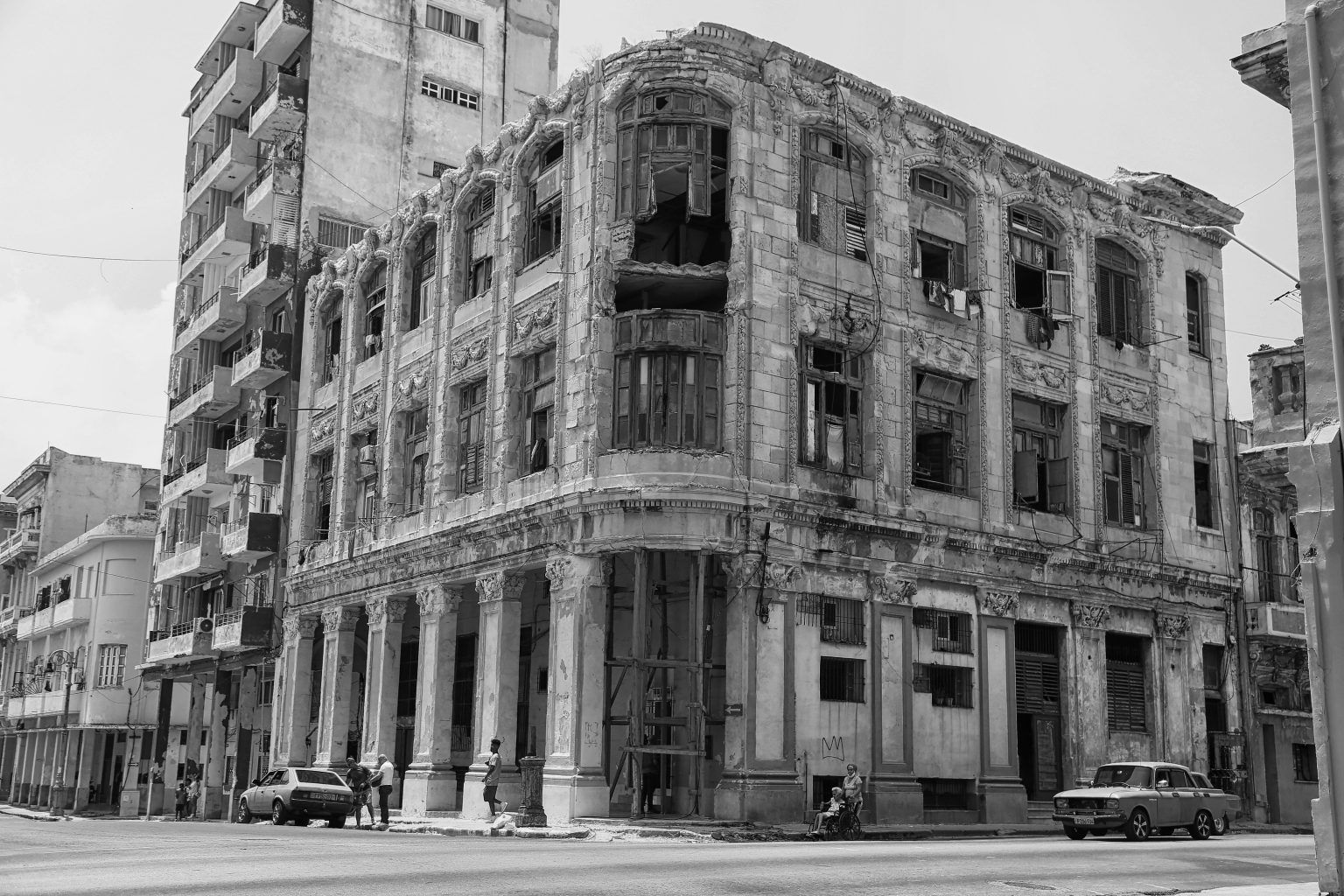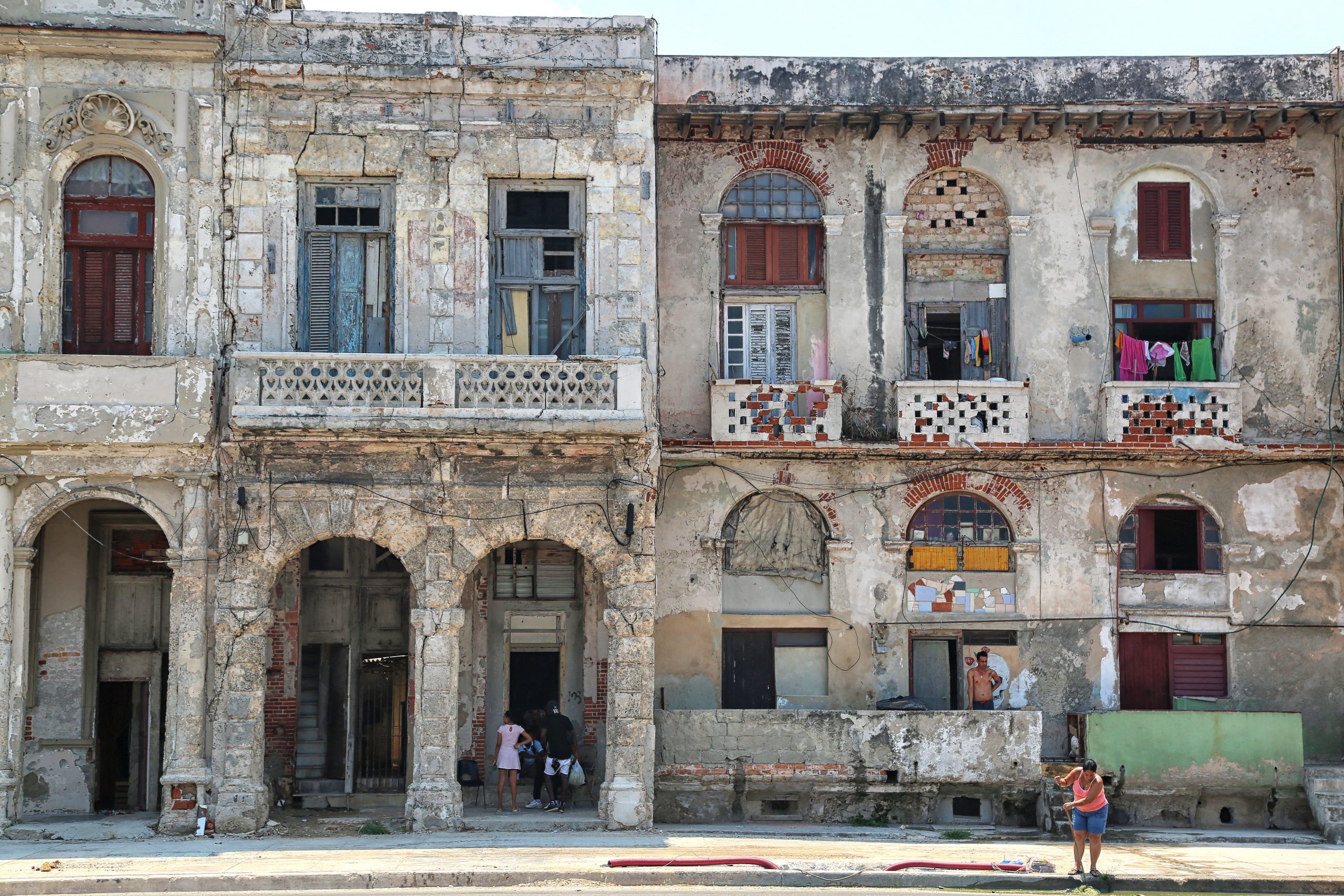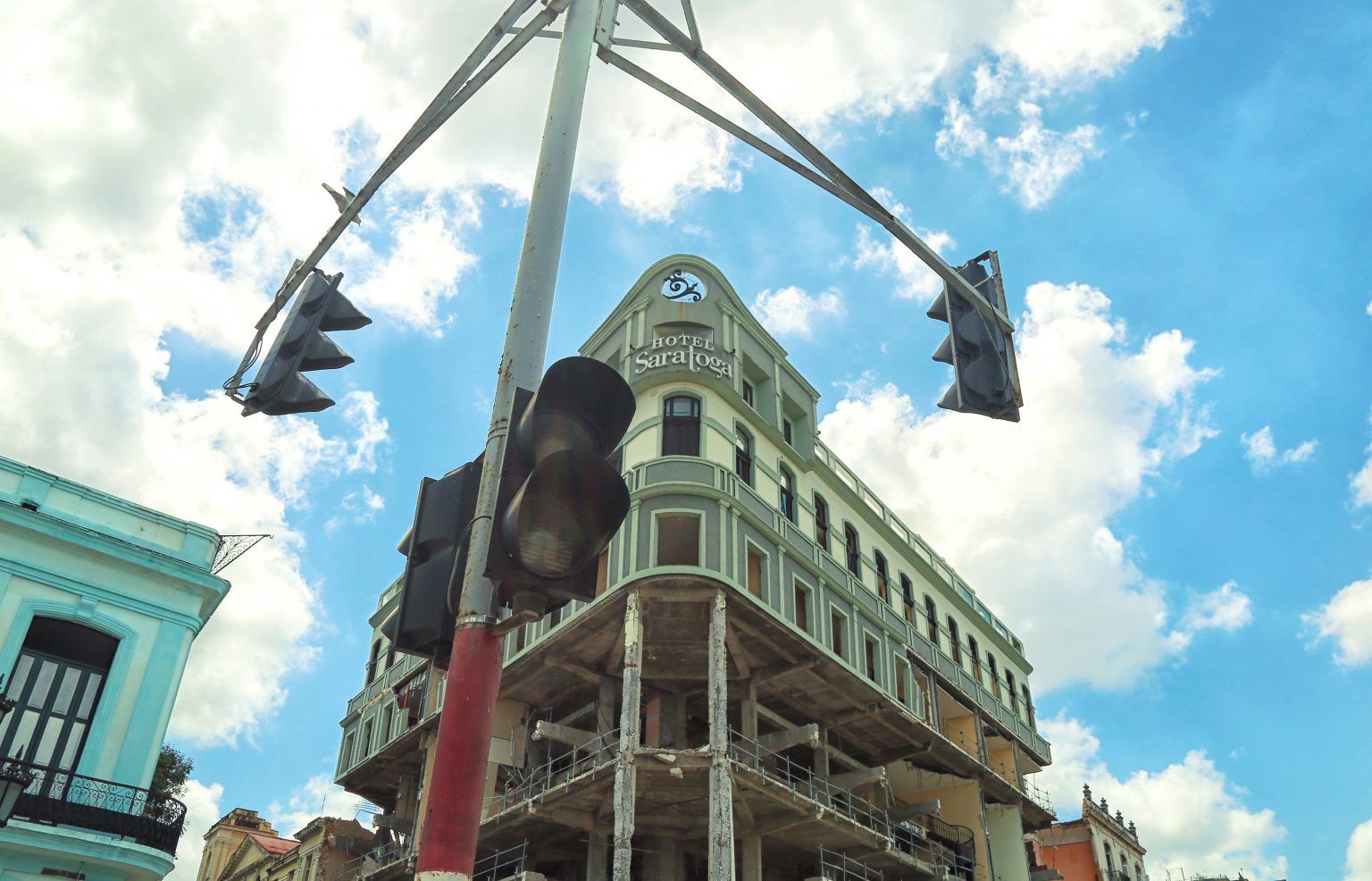The physical decadence of Havana as a reflection, or even as the inevitable face, of the moral and political failure of this era. Certainly, the title of this series of Havana photographs is not a novel premise: “Communism looks like this.”

But this island is the kingdom of repetition, the author of these snapshots might argue, who in any case comes to denounce “that sensation of taking a walk in Aleppo or Mariupol” when one walks through many areas of a city that is not and has not been “under the enemy fire” that the discourse of power has so often predicted.

The architectural ruins—and the human ones—captured in the photos by Ariel Maceo are revealed then, beyond their aesthetic qualities, as the spontaneous cry or the militant slogan of a dissident artist, a political opponent: “Communism looks like this.”
There is something as naive as ironic in the bright colors with which some of these pictures of destruction are presented to us. Perhaps these photos underscore the fact that no voluntarism can disguise this defeat, the definitive fall of those old hopes.
“Havana did not look like this,” warns Maceo in his statement, who has set out to disprove what some people still want to believe: “that Cuba is a tropical Paradise.”

On Instagram, the author of this series presents himself as a photographer, poet and, above all, “persecuted by the Cuban regime.” So, in a way, if we are in Havana, one would not have to expect a better guide from that “museum city that exhibits the worst of an ideology.”
With a dose of resignation, Ariel Maceo states that these photographs of his are, finally, “a short walk through the streets of a capital that has very little left of the splendor it once had and that many of us did not experience.”
















